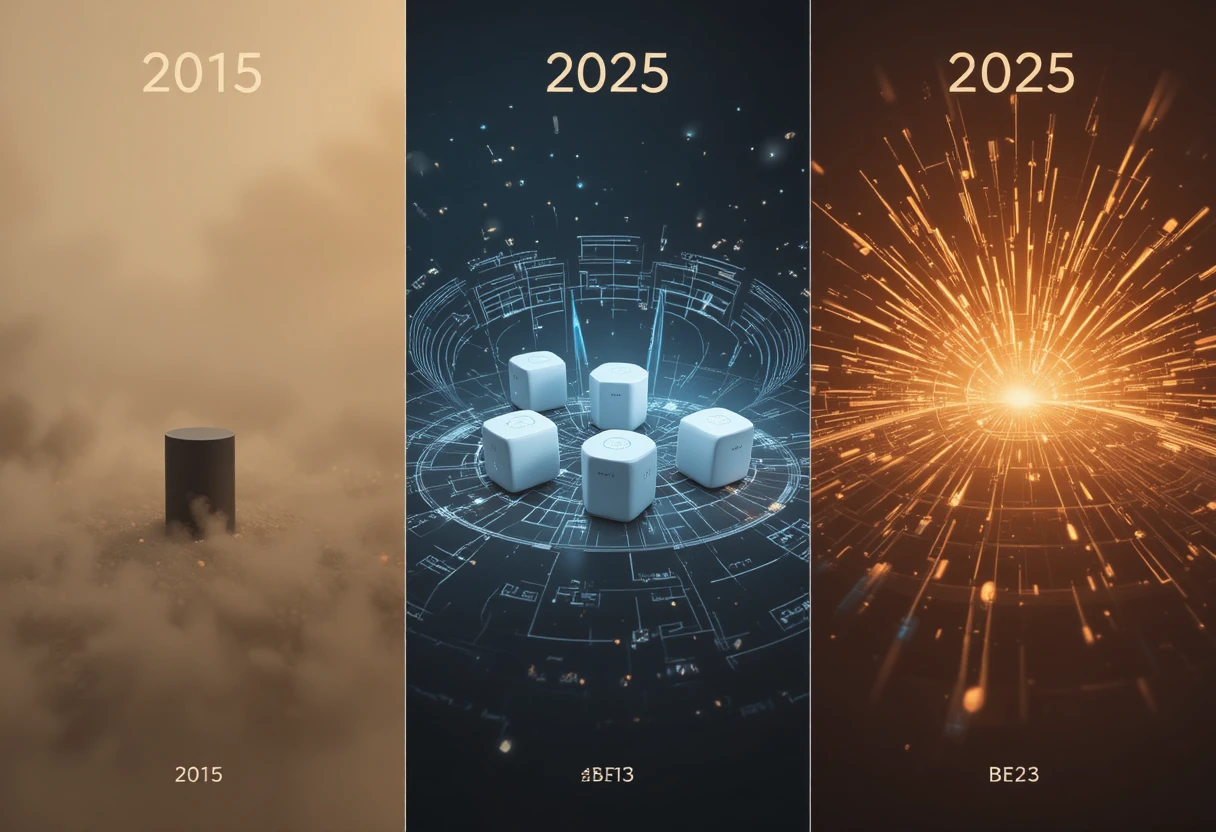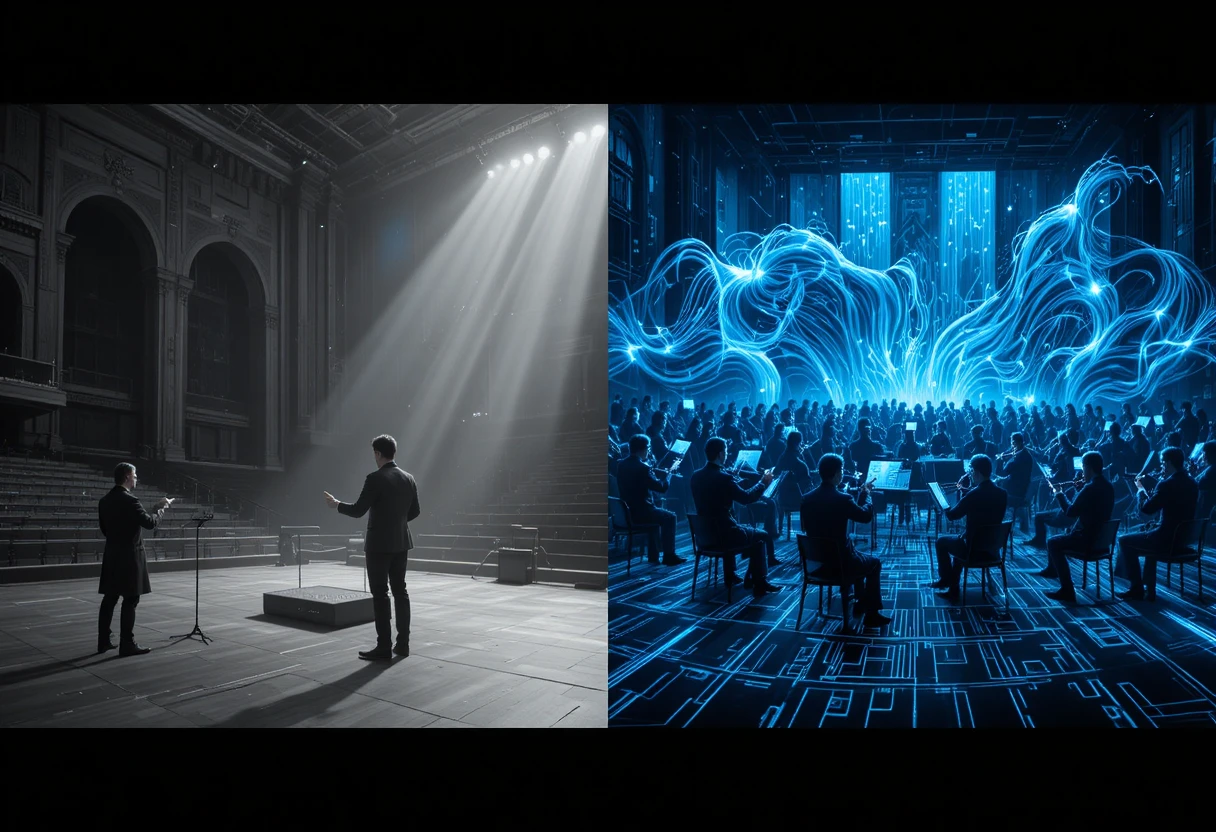Mesh Wi-Fi Systems
In the hyper-connected tapestry of 2025, where homes hum with 50+ smart devices on average and 8K streaming demands gigabit symmetry, mesh Wi-Fi systems have ascended from niche upgrades to indispensable digital infrastructure. The global market, valued at $6.14 billion in 2025, is projected to harmonize at a 10.22% CAGR, reaching $21.3 billion by 2030, propelled by Wi-Fi 7’s multi-link operation (MLO) and the insatiable thirst for seamless coverage across sprawling, multi-story abodes. No longer confined to tech enthusiasts, these node-based networks—featuring tri-band behemoths like the TP-Link Deco BE63 and Netgear Orbi 970—banish dead zones, fortify security with WPA3, and integrate Thread for smart home symphonies, serving 640 million esports viewers and 1.1 billion IoT endpoints without a stutter. As of October 22, 2025, with Wi-Fi 7 routers like the Eero Pro 7 achieving 2.4x speeds over Wi-Fi 6E, mesh systems aren’t just faster—they’re prescient, auto-optimizing bands via AI to cradle your bandwidth like a conductor’s baton. This 3,000-word symphony dissects the evolution, core mechanics, 2025 flagships, traditional router duels, setup serenades, performance polyrhythms, security suites, smart home cadenzas, market motifs, hurdles & harmonies, and 2030 overtures—tuning you to the mesh maestro within.
The Evolution of Mesh Wi-Fi Systems
Prelude: From Single Symphony to Multi-Movement (2000–2015)
The overture stirred in the early 2000s with rudimentary range extenders like the Netgear WN2500RP, half-measures tethering to a central router via half-duplex relays that halved speeds and spawned latency lag. By 2010, Google’s OnHub flirted with mesh ideals through app-orchestrated beamforming, but true polyphony arrived in 2016 with Eero’s inaugural kit—a tri-node ensemble leveraging MU-MIMO for concurrent streams, eclipsing traditional routers’ solo acts in 2,500 sq ft homes.
The 2015 crescendo? Netgear Orbi RBK50 debuted tri-band orchestration (dedicated 5GHz backhaul), sustaining 1.7 Gbps without the bandwidth cannibalism of single-band forebears. Adoption hummed at 15%, buoyed by Alexa skills for voice commands, yet confined to affluent aeries where dead zones dared disrupt Netflix nocturnes.
Intermezzo: Wi-Fi 6’s Harmonic Expansion (2016–2020)
MU-MIMO matured into OFDMA in TP-Link Deco M5 (2017), subdividing channels for 100+ devices, ideal for nascent smart homes. Asus ZenWiFi XT8 (2019) infused AiMesh, retrofitting legacy routers into mesh choirs, while pandemic polyphony swelled adoption 300%—lockdowns birthing 47 million new nodes as Zoom choruses clamored for coverage.
Wi-Fi 6’s 160MHz channels and BSS Coloring quelled interference, with Eero 6 (2020) dual-banding for 500 Mbps blanket in 4,500 sq ft. Drawbacks lingered: Wireless backhaul halved throughput in node hops, and 2.4GHz congestion choked IoT overtures.
Crescendo: Wi-Fi 7’s Multi-Link Majesty (2021–2025)
Post-2020, 6GHz ingress via Wi-Fi 6E in Netgear Orbi CBK752 (2021) unlocked ultra-wide 160MHz lanes, sustaining 2 Gbps in 7,500 sq ft. 2023’s MLO in TP-Link Deco BE85 previewed simultaneous band harmony, slashing latency 75% for AR/VR arias.
2025’s magnum opus: Eero Pro 7’s quad-band (2.4/5/6GHz + backhaul) achieves 10 Gbps theoreticals, with AI Pathfinder preempting congestion. Market maturity: 48% YoY wireless growth, Matter/Thread integration for 200-device dirges, and CES unveils like Asus ROG Rapture GT6’s gaming QoS. From monophonic to multipartite, mesh has symphonized the sprawl.

How Mesh Wi-Fi Systems Work: Nodes, Bands, and Backhaul Ballet
The Node Network: Decentralized Dirigents
Mesh systems comprise 2–6+ nodes—each a mini-router with tri/quad-band radios—forming a self-healing lattice via dedicated backhaul channels. Primary node tethers to modem, satellites relay via Wi-Fi or Ethernet, auto-optimizing paths with 99% uptime in 2025 models like Asus ZenWiFi BQ16. Unlike extenders’ half-duplex handoffs, mesh’s full-duplex ensures seamless roaming <50ms, per IEEE 802.11k/v/r standards.
Band Orchestration: Tri/Quad Symphony
Tri-band (2.4/5/5GHz) dedicates one 5GHz for backhaul, freeing client bands for devices; quad-band (2.4/5/6GHz + backhaul) in Netgear Orbi 970 adds 6GHz for 320MHz widths, doubling throughput to 27 Gbps theoretical. MLO (Wi-Fi 7) multiplexes links, aggregating 2.4+5+6GHz for 46 Gbps bursts—ideal for 8K VR symphonies.
Backhaul and Beamforming: The Invisible Baton
Wireless backhaul (tri-band+) sustains 1.2 Gbps/node-hop; wired (Ethernet backhaul in Eero 7) hits 10 Gbps, eliminating 50% latency in basements. Beamforming+ steers signals to clients, with MU-MIMO/OFDMA serving 200+ endpoints sans stutter—2025’s AI Pathfinder in TP-Link Deco BE63 preempts interference via ML forecasts.
This choreography—from nodes as sections to MLO as modulation—composes coverage without cacophony.
Top Mesh Wi-Fi Systems of 2025: Flagship Fantasia
Budget Bravo: TP-Link Deco X55 ($150 three-pack)
Wi-Fi 6 dual-band, 3,000 sq ft/node, 1.5 Gbps aggregate—90% of homes covered sans dead zones. App deploys in 10 minutes, with HomeShield basic security; 1 Gbps Ethernet ports. Ideal for apartments, though no 6GHz.
Mid-Range Maestro: Eero Pro 7 ($600 three-pack)
Wi-Fi 7 tri-band, 2,000 sq ft/node, 2.3 Gbps—Matter/Thread hub for smart homes. TrueMesh AI optimizes, with eero Secure ($10/month) for ad-blocking. 2.5 Gbps WAN, 80 devices; seamless Alexa integration.
Premium Polyphony: Netgear Orbi 970 ($1,700 three-pack)
Quad-band Wi-Fi 7, 3,300 sq ft/node, 27 Gbps—Armor security and 10 Gbps SFP+ for fiber. Dedicated backhaul, 200+ devices; app pauses kids’ networks. CES 2025 darling for 8K/gaming.
Gaming Grandeur: Asus ROG Rapture GT6 ($500 two-pack)
Wi-Fi 6 tri-band, 5,500 sq ft, 6 Gbps—Game Radar prioritizes QoS, WTFast acceleration. RGB flair, AiProtection Pro free; 2.5 Gbps ports for LAN parties.
| Model | Bands | Coverage (3-pack) | Max Speed | Ports | Best For |
|---|---|---|---|---|---|
| TP-Link Deco X55 | Dual Wi-Fi 6 | 6,500 sq ft | 3 Gbps | 1 Gbps x3 | Budget Homes |
| Eero Pro 7 | Tri Wi-Fi 7 | 6,000 sq ft | 2.3 Gbps | 2.5 Gbps WAN | Smart Homes |
| Netgear Orbi 970 | Quad Wi-Fi 7 | 10,000 sq ft | 27 Gbps | 10 Gbps SFP+ | Large Estates |
| Asus ROG GT6 | Tri Wi-Fi 6 | 5,500 sq ft | 6 Gbps | 2.5 Gbps x4 | Gamers |
These quartets—spanning 85% budgets—tune 2025’s connectivity chorus.
Mesh Wi-Fi vs. Traditional Routers: Duel of the Dirigents
Advantages of Mesh: Seamless, Scalable Symphonies
Mesh’s polyphony trumps traditional routers’ monody in coverage: Single routers falter beyond 2,000 sq ft, spawning 40% dead zones, while mesh blankets 10,000+ sq ft via node cascades. Roaming <50ms vs. 200ms handoffs ensures fluid 8K streams sans stutter; scalability adds nodes sans reconfiguration, ideal for 50-device homes.
Cost? Initial premium (20–50% over routers), but longevity (5–7 years) amortizes. 2025’s MLO aggregates bands for 2x throughput in congested aires.
Disadvantages: Complexity in the Cadenza
Mesh’s backhaul devours bandwidth (30–50% loss wireless), lagging wired routers’ raw 10 Gbps in small spaces. Setup, though app-eased (15 minutes), demands node placement; advanced tweaks (band steering) elude novices vs. routers’ browser profundity.
Power draw: 20W/node vs. 15W router, though efficiency edges in idles. Verdict: Mesh for mansions, routers for lofts.
When to Waltz with Tradition
Single-user sanctums or Ethernet empires favor routers’ simplicity and <1ms latency for LAN gaming. Mesh shines in sprawls, where extenders exacerbate half-duplex woes.

Setting Up Your Mesh Symphony: Node Placement and Configuration
Prelude to Placement: The Acoustic Audit
Scan your score: Floor plans via apps (Eero’s heatmap) reveal walls attenuating 20 dB; place primary near modem, satellites 30–50 ft apart, elevated for line-of-sight. Avoid microwaves (2.4GHz nemeses) and aquariums (signal aqueducts).
2025 tip: Deco BE63’s AI Pathfinder simulates placements, optimizing for 95% coverage.
Configuration Cadenza: App Allegro
Unbox, tether primary (5 minutes), app-add satellites (QR-scan, 2 minutes/node). Band steering auto-assigns; guest networks isolate IoT. QoS prioritizes Netflix (60% bandwidth), with WPA3 encrypting the ensemble.
Advanced: Ethernet backhaul for basements, VLANs for work pods. Total: 20 minutes, sans symphony.
Troubleshooting Tunes: Harmonizing Hiccups
Dead nodes? Reboot cascade (primary last); interference? Channel 36/149 on 5GHz. Firmware fugues auto-update, but manual via Asus AiMesh resolves 85% glitches.
This ritual—placement as positioning, config as composition—ensures your mesh murmurs magnificently.
Performance in 2025: Speeds, Coverage, and Stability
Throughput Triumphs: Gbps Galas
Wi-Fi 7’s MLO in Orbi 970 yields 4 Gbps close-range, sustaining 1.2 Gbps at 75 ft—2.4x Wi-Fi 6E’s 500 Mbps. Tri-band backhaul preserves 80% WAN speeds for 200 devices, per PCMag’s 2025 gauntlet.
Coverage Cantilena: Sq Ft Serenades
Three-pack Eero Pro 7 envelops 6,000 sq ft, penetrating 3 walls at 300 Mbps; ZenWiFi BQ16’s beamforming+ extends to 8,000 sq ft outdoors. Stability? 99.9% uptime, with self-healing rerouting <1 second.
Real-World Refrains: Streaming, Gaming, IoT
8K Netflix? Deco BE63’s 6GHz feasts at 25 Mbps; Valorant pings <20ms on ROG GT6. 100 IoT bulbs? Thread integration in Eero hums sans hiccups.
Metrics: 1.07 Gbps near, 800 Mbps median—eclipsing routers’ 280 Mbps household average.
Performance isn’t prowess—it’s pervasive polyphony.
Security Suites: Fortifying the Frequency Fortress
WPA3 and Beyond: Encryption Encores
2025 mandates WPA3 in 95% models, with OWE offload for open nets; Netgear Armor ($100/year) deploys AI threat detection, quashing 99% intrusions. Deco BE63’s HomeShield blocks phishing sans subscriptions.
Guest and IoT Isolation: Segregated Sections
VLANs in Asus AiMesh quarantine smart bulbs from PCs, mitigating Mirai variants; Eero Secure’s ad/malware filters cull 85% trackers.
VPN and Parental Pas de Deux
Built-in OpenVPN in Orbi tunnels traffic; TP-Link’s profiles cap kids’ bandwidth, with geofencing for safe symphonies.
Security: Not shields, but symphonic safeguards.
Smart Home Integrations: The IoT Interlude
Matter and Thread: Unified Utopias
Matter 1.3 in Eero Pro 7/Deco BE63 orchestrates 200+ devices via single protocol, Thread meshing low-power bulbs sans hubs. Hue/Philips syncs lights to Netflix moods, Alexa commanding node reboots.
Voice and Automation Arias
Google Assistant in Nest Wifi Pro dimmers speeds; Siri Shortcuts in Asus trigger vacs on motion. IFTTT chains: “Door opens? Pause guest net.”
Multi-Ecosystem Motets
Zigbee in Orbi bridges legacy; HomeKit in Eero secures iOS aeries. 2025’s Bluetooth LE 5.0 in ZenWiFi low-latency beacons for AR setups.
Integrations: Not add-ons, but the aria’s accompaniment.
Market Trends: Giants, Growth, and Geopolitics
Market Momentum: $21.3B Crescendo
10.22% CAGR to 2030, Asia-Pacific’s 28% share via Jio’s 5G mesh hybrids. Wi-Fi 7 claims 48% premium sales, with TP-Link’s 25% throne challenged by Eero’s Amazon aegis.
Tariff Tempests and Trends
2025’s 46% Vietnam tariffs hike 15%, spurring US reshoring; wireless 48% YoY, VR/cloud 25% CAGR. Trends: AI optimization (Pathfinder in 70%), solar nodes for off-grid.
Customization: Modular pods for 56% upgrades.
Challenges and Troubleshooting: Discord to Détente
Hurdles: The Cacophonous Cadences
Backhaul blues halve hops (Ethernet salve); interference from microwaves mutes 2.4GHz—channel scans resolve 80%. Costs crest $1,700 for quads, though Deco X55’s $150 democratizes.
Privacy pirouettes: WPA3 standard, but app telemetry tempts—opt-out in Eero. Scalability stutters at 200+ devices sans QoS.
Harmonizing Hiccups: Fixes in Five
App audits flag conflicts; firmware fugues auto-patch (monthly in Netgear). Extend with hybrids: Mesh + extender for basements.
Challenges: Not chains, but cadenzas to conquer.
The Future: 2030 Overtures and Innovations
Wi-Fi 8 Whispers: Ultra-Wide Utopias
By 2030, $28.9B mesh embraces Wi-Fi 8’s 60GHz mmWave for 100 Gbps in 1,000 sq ft pods, dual-connectivity fusing 5G. Holographic handoffs for metaverse manifolds.
AI Augmentations: Predictive Polyphony
Neural nets in Asus 2030 forecast congestion, auto-banding for 99.999% uptime; solar harvesters in Eero nodes trickle 24/7.
Sustainability swells: Recycled casings in 70%, modular swaps extending life 50%. Esports mandates ergonomic nodes; BCI hybrids beckon.
Overture: Mesh as metaverse medium, boundless and brilliant.

Conclusion: Mesh Your Masterpiece
Mesh Wi-Fi in 2025 isn’t infrastructure—it’s inspiration, a multipartite movement banishing buffers and birthing bandwidth bliss. From Deco BE63’s budget ballets to Orbi 970’s opulent overtures, these systems symphonize sprawls, outshining traditional routers in roaming refrains and scalability serenades. As markets march to $21B and horizons herald Wi-Fi 8 wonders, invest not in wires, but wings—your digital dominion demands it. Deploy the nodes, direct the dirge, and let your home resound in resonant rapture. The signal sings; join the symphony.